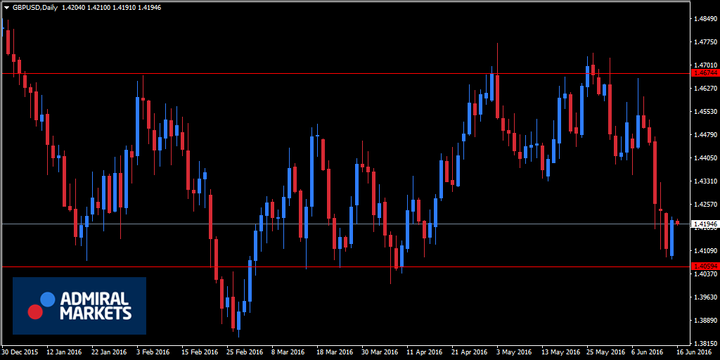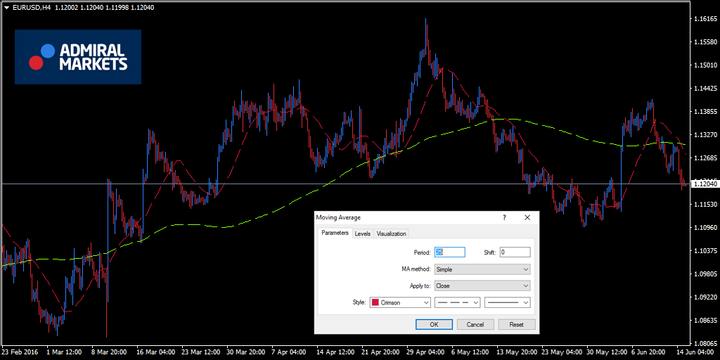How To Trade Forex - A Guide For Beginners - 16 minutes read

Forex Trading Beginners Guide
Forex trading for beginners can be difficult. In general, this is due to unrealistic but common expectations among newcomers to this market. Whether we are talking about forex trading for beginners in the UK or share trading for beginners, many of the basic principles overlap. In this article, we're going to focus on Forex trading. However, some of the same strategies, terms and general concepts also apply to share trading.
By the end of it, you'll know all the most essential terms used in Forex trading so you won't be confused at any point while you learn to trade. You'll learn all the basics, including which platform you use, how to execute a trade, 10 Forex trading tips for beginners who want to earn, strategies, and more.
Table of Contents
- Forex Trading Beginners Guide
- What is Forex Trading for Beginners?
- How to Forex Trade for Beginners
- Trading terminology: Forex trading notes for beginners
- How to Trade Forex for Beginners - Making trades
- How to read Forex charts for beginners
- Learn how to trade Forex for beginners - Forex trading systems
- Forex Trading platforms for beginners
- Is forex good for beginners? Risks every beginner should be aware of
- 3 Forex trading strategies for beginners
- 10 Forex trading tips for beginners who want to earn
This article can be considered a free forex trading course for beginners. We recommend writing down some of the things you learn here later as a set of Forex trading notes that you can quickly refer back to. It may take some time to remember everything we cover.
What is Forex Trading for Beginners?
Before we begin this Forex trading for beginners guide and learn how to trade Forex, we will quickly answer the question, 'What is Forex trading?':
The foreign exchange (FX or forex) market is a global marketplace where traders exchange national currencies How to Forex Trade for Beginners
The next question that comes to everyone's mind is: how to learn Forex from scratch? Can I teach myself to trade Forex? Don't worry, this Forex trading for beginners guide is our definitive manual for all aspects of Forex and general trading. By the end, you'll understand the basics of trading Forex and how to begin.
Trading terminology: Forex trading notes for beginners
Here's where your Forex trading notes for beginners can begin. I'm going to start this trading for beginners guide in the UK by presenting some of the most common terms you'll come across in trading that you'll need to know.
You may have heard exciting accounts about the money that can be made with Forex trading. When you begin to look into it, though, foreign currency trading can seem daunting. It certainly involves a steep learning curve. It is dangerous territory for the novice who has not adequately studied its specialized terminology and complex calculations. One can lose a lot of money quickly. There is risk involved as well as possibly lucrative gains. Here are some tips to help the novice build a solid foundation for Forex trading.
Don't rush into the Forex market with your life savings. In fact, you should make committing actual funds to trading the last step you take. Many brokers offer the beginner an opportunity to take a practice run at trading without committing actual money. This will give you a chance to sit in the driver's seat of this fast moving market and see if you are really ready to make the quick decisions it requires.
After you have studied the Forex market, have taken tutorials offered online and become proficient in such terms as "bid-ask price," "pips" and "currency pairs," you are ready to develop a strategy. You need to set definite limits on the amount of money you commit.
Accept all the help you can get, both before starting and after you have begun. You will need to continuously study this complex market with its trends and fluctuations. If you have a personal mentor to guide you, you are fortunate. But if you do not, there is a lot of help available through your online broker. Look at what the various brokers offer and choose one that will give you ongoing help and support. This will include tutorials, the provision of up-to-date information on this changing market, and chat rooms with seasoned traders.
Since trading in foreign currencies is influenced by the world political situation, you will want to keep abreast of the most current information and events that may affect the value of currencies. You will want to sign up for some RSS feeds to keep you informed. You'll also want to often seek advice from your broker.
While you are beginning to trade, you are likely to sustain some losses. Do not let this discourage you, but keep the losses within a range that you can weather. Never commit all of your funds. The losses should motivate you to just study and try harder.
Foreign currency fluctuations can be quick and volatile, but more often they follow a long term trend. Identifying these trends and following their development will be a major preoccupation for the serious Forex trader.
Once you identify these trends and are reasonably sure of them, it is best to trade with them rather than betting against them. Trends are never certain and will include fluctuations, but they will take you in the right direction overall.
We hope these tips will help you to prepare a solid foundation for successful Forex trading. The Forex market is an exciting one that requires quick decision making. With practice it can become extremely lucrative.
How to Trade Forex for Beginners: 3 strategies to learn how to trade Forex
This article will look at top Forex trading strategies for beginners by introducing some simple Forex trading strategies. In particular, we will guide you through three key Forex trading strategies for beginners to use today, namely - the Breakout strategy, the Moving Average Crossover strategy, and the Carry Trade strategy.

The Forex market (Foreign Exchange Market or FX) is hugely liquid, with a vast number of participants. It is also a well-established market. As you might expect, the combination of popularity and time has resulted in professional FX traders devising countless trading strategies.
As a day trading beginner who might simply be searching for beginner's trading guides on how to learn to trade Forex, or even an intermediate FX trader seeking some useful trading strategy guides to improve their knowledge and skills, the sheer volume of trading techniques available can be daunting and confusing.
Some day trading strategies are very complicated, with a steep learning curve. So Forex beginners may find it better to start with a simple and easy Forex strategy.
After all, the simpler the strategy, the easier it is to understand the underlying concepts. There will be plenty of time to add complex actions after you have mastered the basics. Regardless of whether you adopt a simple or complex strategy, remember that your overarching mantra should always be to use what works.
New traders are generally unable to devote large amounts of time to monitoring developments. For these newcomers to Forex, simple strategies offer an effective but low-maintenance approach.
Three Easy and Simple Forex Trading Strategies For Beginners
The first two strategies we will show you are fairly similar because they attempt to follow trends. The third strategy attempts to profit from interest rate differentials, rather than market direction.
But first things first – what is a trend?
To put it simply, a trend is the tendency for a market to continue moving in a given overall direction. A trend-following system attempts to produce buy and sell signals that align with the formation of new trends. There are many methods designed to identify when a trend starts and ends.
Many of the simple Forex trading strategies that work have similar methods. In fact, some traders have produced outstanding track records using such systems.
But there are also some drawbacks to these strategies:
- They are difficult to stick with
- Large trends can be infrequent
- The conditions that signify the potential beginning of a trend, are not frequent.
This means that the strategy tends to generate numerous losing trades. The theory is that these losses will be offset by more infrequent but larger winning trades. That is a hard pill to swallow in practice. Also, once the trend breaks down, you tend to give back a healthy amount of your profit.
You may have heard the phrase, "the trend is your friend", but you may not be so familiar with the full expression, which adds "until the end". The end comes when the trend fails, and this can be very trying on a trader's psychology.
One big issue with a trend-following system is that you need deep pockets to properly use it. This is because possession of a large amount of capital reduces your chances of going bust during an extended drawdown. So trend following is useful as a Forex strategy for beginners to understand, but it may not be ideal for less wealthy individuals.
Now, let's take a look at our forex trading strategies for beginners!
1. Breakout - Forex Trading Strategy for Beginners

Depicted: GBP/USD - Admiral Markets MetaTrader 4 Supreme Edition (MT4SE) - Disclaimer: Charts for financial instruments in this article are for illustrative purposes and does not constitute trading advice or a solicitation to buy or sell any financial instrument provided by Admiral Markets (CFDs, ETFs, Shares). Past performance is not necessarily an indication of future performance.
Our first strategy attempts to identify when a trend might be forming. It looks for price breakouts. Markets sometimes range between bands of support and resistance. This is known as consolidation. A breakout is when the market moves beyond the boundaries of its consolidation, to new highs or lows. When a new trend occurs, a breakout must occur first. Breakouts are, therefore, seen as potential signals that a new trend has begun. But the trouble is, not all breakouts result in new trends.
In Forex, even such simple strategies must be used with risk management. By doing so, you seek to minimise your losses during the trend break-down. A new high indicates the possibility that an upward trend is beginning, and a new low indicates that a downward trend is beginning.
So how can we get a feel for the type of trend we are entering?
The length of the period can help determine the highest high or the lowest low. A breakout beyond the highest high or the lowest low for a longer period suggests a longer trend. A breakout for a short period suggests a short-term trend. In other words, you can tune a breakout strategy to react more quickly or more slowly to the formation of a trend. Reacting quicker allows you to ride a trend earlier in the curve, but may result in following more shorter-term trends.
Let's take a look at a reasonably long-term breakout strategy:
The buy signal is when the price breaks out above the 20-day high, and the sell signal is when the price breaks out below the 20-day low. This is very simple, but there is still a major drawback. Namely, new highs may not result in a new uptrend, and new lows may not result in a new downtrend. So we are going to experience our fair share of false signals.
Using a stop-loss can help to alleviate this problem. To keep things really simple, here's an extremely basic rule for exiting trades: We are going to take a time-based approach. You simply close your position after a certain number of days have elapsed. This time-based exit side-steps the issue of things becoming tricky when the trend begins to break down. Once you enter a trade, hold it for 80 days and then exit.
Remember, this is a long-term strategy. If you find these parameters do not yield enough frequent signals, they can be adjusted to whatever suits you best. For example, you can try using hours instead of days for a shorter strategy. Backtesting your results will give you a feel for the effectiveness of your choices. MT4SE offers backtesting, along with a large selection of other useful tools.
FREE Demo Trading With Admirals
If you're interested in trying this strategy out without risking your money on live markets, there's no better place to do this than on a FREE Admirals demo trading account. Instead of heading straight to the live markets and putting your capital at risk, you can avoid the risk altogether and simply practice until you are ready to transition to live trading. Take control of your trading experience, click the banner below to open your FREE demo account today!
2. Moving Average Crossover - Forex Strategy for Beginners
Our second Forex strategy for beginners uses a simple moving average (SMA). SMA is a lagging indicator that uses older price data than most strategies, and moves more slowly than the current market price. The longer the period over which the SMA is averaged, the slower it moves. Often, we use a longer SMA in conjunction with a shorter SMA. For this simple Forex strategy, we are going to use a 25-day moving average as our shorter SMA, and a 200-day moving average for the longer one.

Depicted: EUR/USD - Admiral Markets MetaTrader 4 Supreme Edition (MT4-SE) - Disclaimer: Charts for financial instruments in this article are for illustrative purposes and does not constitute trading advice or a solicitation to buy or sell any financial instrument provided by Admiral Markets (CFDs, ETFs, Shares). Past performance is not necessarily an indication of future performance.
In the chart above, the 25-day moving average is the dotted red line. You can see that it follows the actual price quite closely. The 200-day moving average is the dotted green line. Notice how it smooths out the price movement? When the shorter, faster SMA crosses the longer one, it indicates a change in the trend. When the short SMA moves above the longer SMA, it means newer prices are higher than older ones.
This suggests a bullish trend, and this is our buy signal. When the short SMA moves below the longer SMA it suggests a bearish trend, and this is our sell signal. Rather than solely being used to generate trading signals, moving averages are often used as confirmations of overall trends. This means that we can combine these two strategies by using the confirmatory aspect of our SMA to make our breakout signals more effective.
With this combined strategy, we discard breakout signals that don't match the overall trend indicated by our moving averages. Here's an example: If we get a buy signal from our breakout, we should look to see if the short SMA is above the long SMA. If it is, we should place our trade. Otherwise, perhaps it's better to wait.
3. Carry Trade - Top Beginner Forex Strategy
Our final strategy is essential to know. It's a type of trade that is widely used by professionals too, so it is not purely a beginner Forex strategy. Best of all, it is easy to implement and understand. The essence of the carry trade is to profit from the difference in yield between two currencies. To understand the principles involved, let's first consider someone who physically converts currency.
Imagine a trader borrows a sum of Japanese Yen. Because the benchmark Japanese interest rate is extremely low (effectively zero at the time of writing), the cost of holding this debt is negligible. The trader then exchanges the yen into Canadian dollars and invests the proceeds into a government bond, which yields 0.6%. The interest received on the bond should exceed the cost of financing the Yen debt.
But there is a drawback:
Obviously, a currency risk is baked into the trade. If the Yen appreciated enough against the Canadian dollar, the trader would end up losing money. The same principles apply when trading FX, but you have the convenience of it all being in one trade. If you buy a currency pair where the first-named ''base currency'' has a sufficiently high interest rate, in relation to the second-named ''quote currency'', then your account will receive funds from the positive swap rate.
The amount yielded is correlated to the amount of currency commanded, so leverage is an aid if the strategy pays off. As noted earlier though, there is an inherent risk that you could end up on the wrong side of a move in the currency pair. It is therefore important to carefully select the right currencies. Inertia is your friend with this strategy, and ideally, you are looking for a low volatility FX pair. It's also important to note that leverage will end up magnifying losses if you get it wrong.
The Japanese Yen has long been popular as the funding currency, because Japanese rates have been low for so long, and the currency is perceived as stable. The strategy works well at a time of buoyant risk appetite, because people tend to seek out higher-yielding assets. The action of traders implementing the strategy can itself support the strategy, because the more people using the strategy, the greater the selling pressure on the funding currency.
But, there's a current problem. The global low-interest environment, has narrowed interest rate differentials. When risk appetite collapsed during the credit crunch, many fingers got burned as funds flowed into the safe-haven of the Japanese Yen. With the Fed signalling its intention to tighten monetary policy in the future, we may yet find the carry trade coming back into favour.
If you're interested in trading on popular currency pairs such as CADJPY and EURUSD or perhaps more exotic currency pairs such as GBPPLN and USDRON, you can do so by opening a Forex & CFD trading account with Admiral Markets!
If you're feeling inspired to start trading, or this article has given you insight to add to your existing trading knowledge, you may be pleased to know that Admirals provides the ability to trade with Forex and CFDs on up to 80+ currencies, with the latest market updates and technical analysis provided for FREE! Click the banner below to open your live account today!
Final Thoughts on Forex Trading Strategies for Beginners
We hope that you have found this introductory guide to easy Forex trading strategies for beginners useful. Bear in mind that the examples we have shared primarily aim to get you thinking about the principles involved. Now that you are familiar with these simple Forex trading strategies, you may be ready to start trading.
About Admirals
Admirals is a multi-award winning, globally regulated Forex and CFD broker, offering trading on over 8,000 financial instruments via the world's most popular trading platforms: MetaTrader 4 and MetaTrader 5. Start trading today!
This material does not contain and should not be construed as containing investment advice, investment recommendations, an offer of or solicitation for any transactions in financial instruments. Please note that such trading analysis is not a reliable indicator for any current or future performance, as circumstances may change over time. Before making any investment decisions, you should seek advice from independent financial advisors to ensure you understand the risks.
TradeMiner Software Identifies Historical Seasonal Trends and Market Cycles

